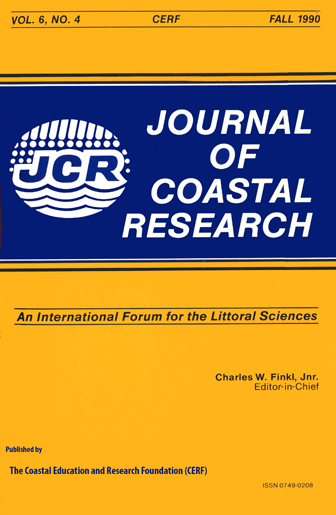Inter-Annual Spatial Variability in the Response of Spartina alterniflora Biomass to Amount of Precipitation
Keywords:
Salt marsh, biomass, precipitation, vegetation index, salinity, remote sensing, Delaware, tidal inundation, Spartina alternifloraAbstract
Although most plant species respond to increased precipitation by increasing biomass, there are few reports that have examined long-term changes in the spatial distribution of biomass within a natural population in response to variability in precipitation. Qualitative comparisons of biomass in 11 different drainage areas within a 580 ha area of smooth cordgrass (Spartina alterniflora) in a Delaware, USA, salt marsh were made for eight different years, based on reflectance (vegetation index) values computed from Landsat MSS, Landsat TM, and SPOT satellite data. The vegetation index is highly correlated with live aerial biomass of this species.
Significant correlation coefficients between quantity of precipitation and vegetation index values for seven of the drainage areas indicated that biomass was the most precipitation-sensitive in high salinity areas least influenced by upland runoff, and the least sensitive in parts of the marsh adjacent to large upland areas or freshwater creeks. Inter-annual variations in tidal flooding caused by varying mean sea level do not seem to influence spatial biomass patterns in this marsh. These results indicate that (1) remote sensing can be used to monitor wetland biomass during periods of environmental (e.g., precipitation) change and (2) differences in the growth response of S. alterniflora to variability in precipitation exist on a relatively small spatial scale along a salinity gradient.


